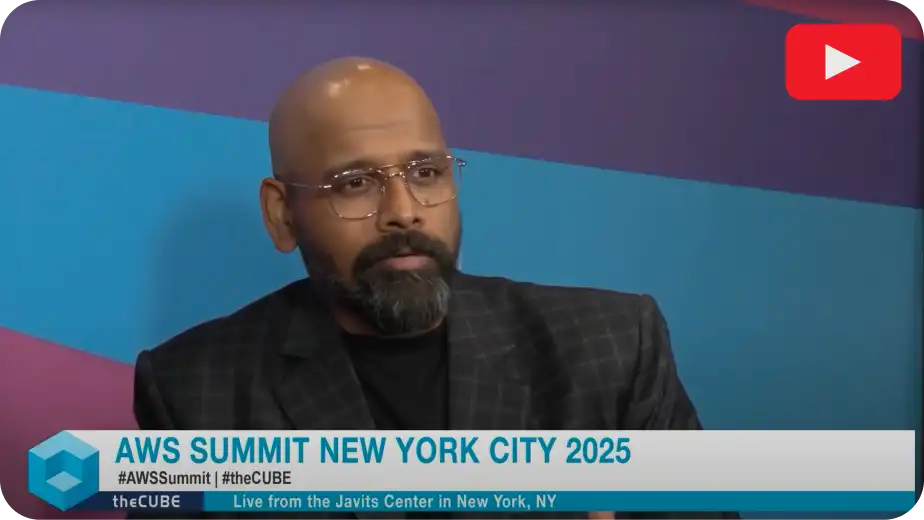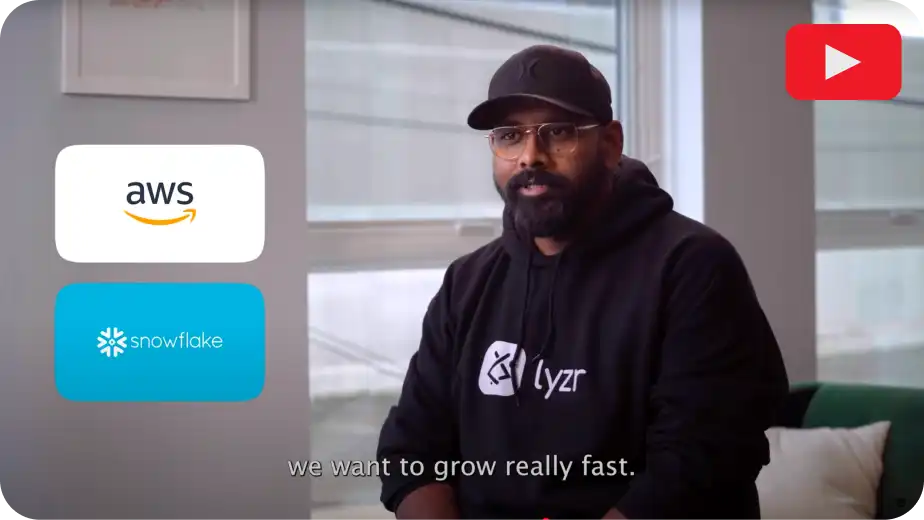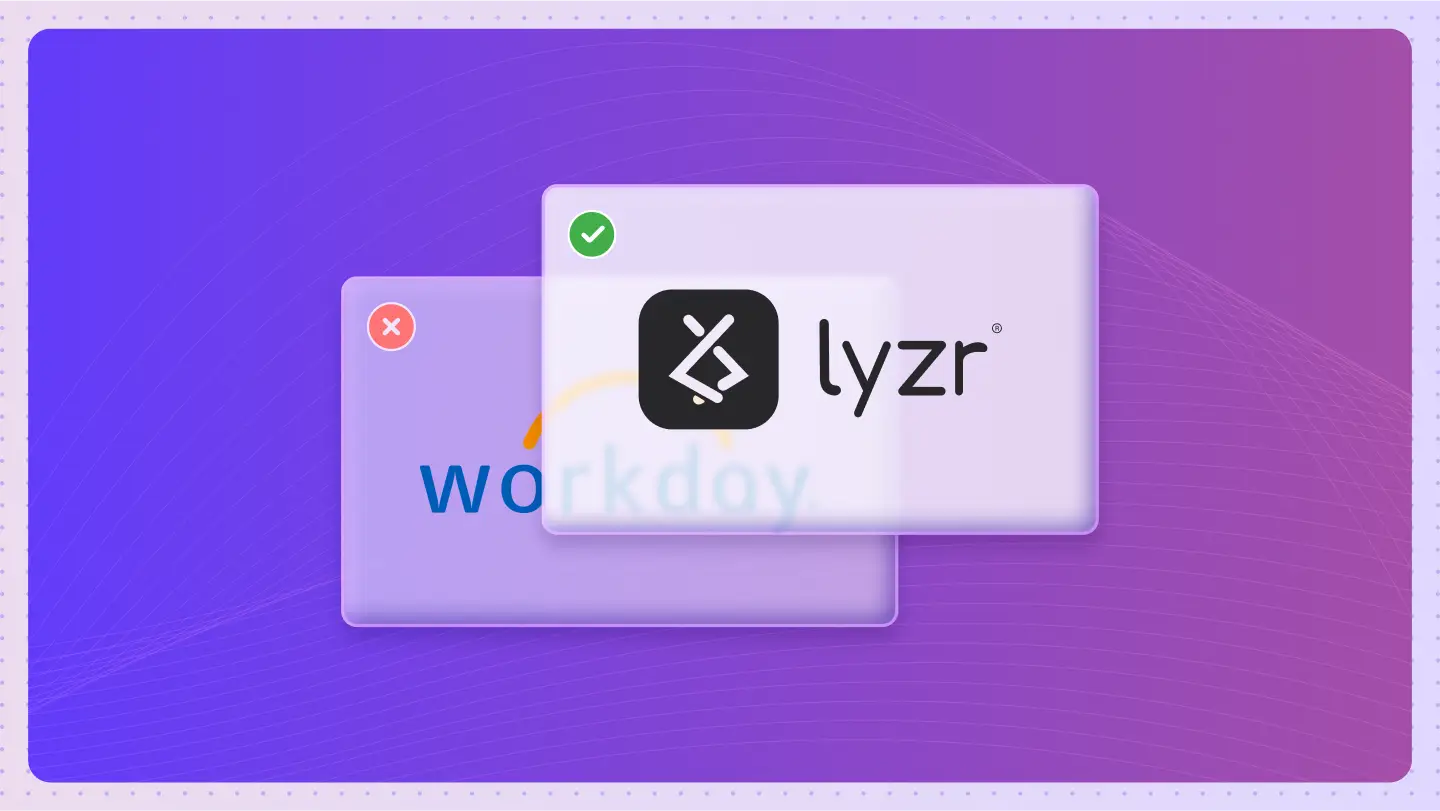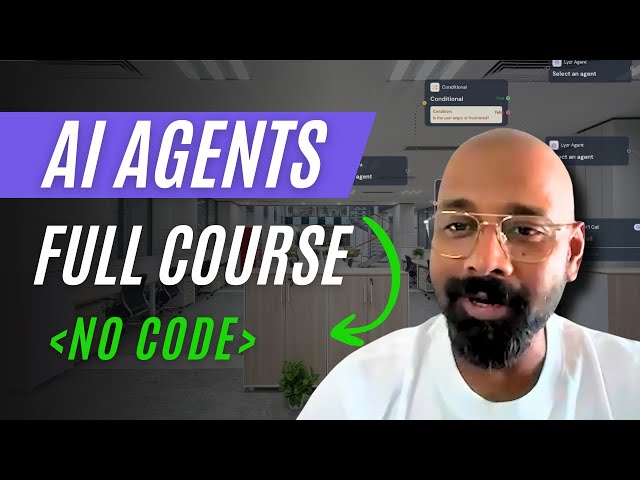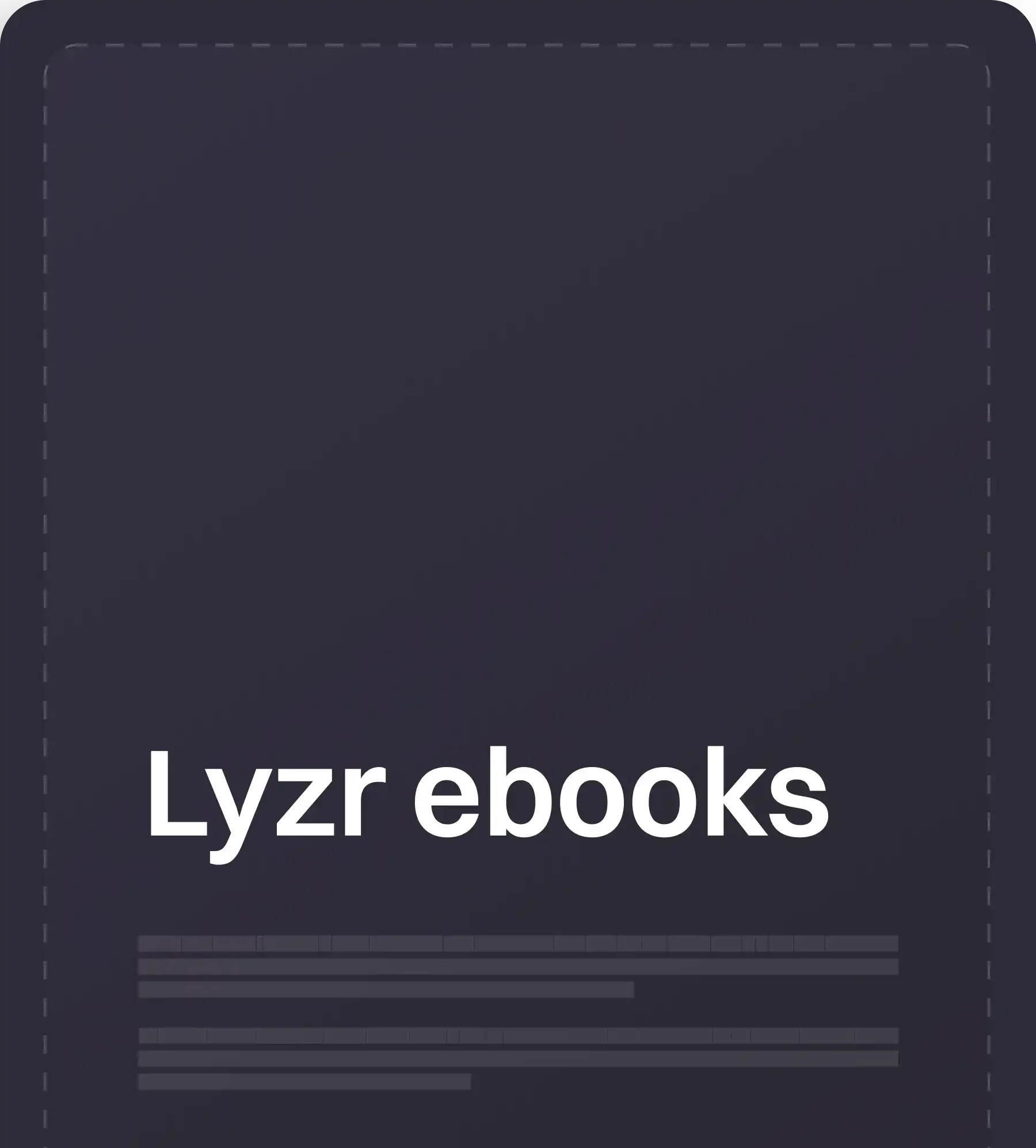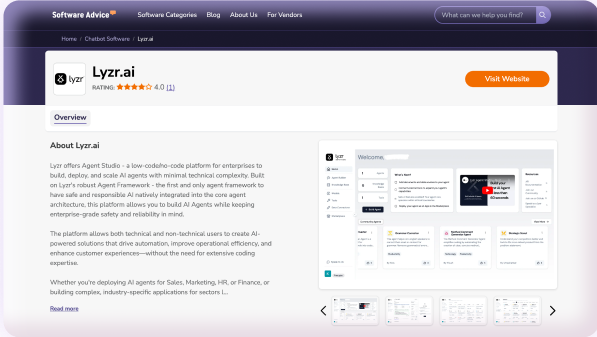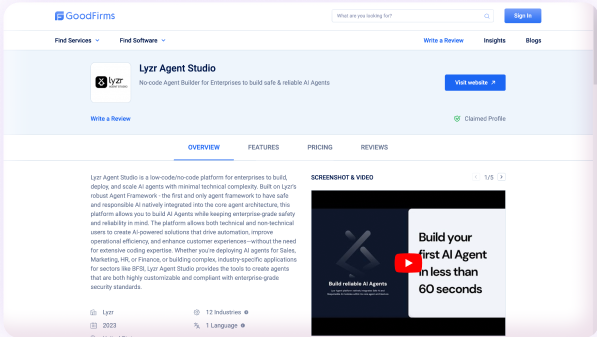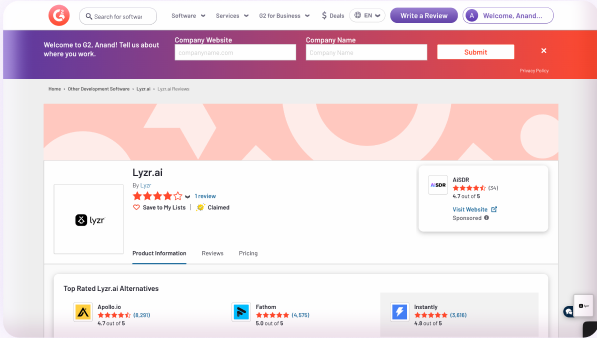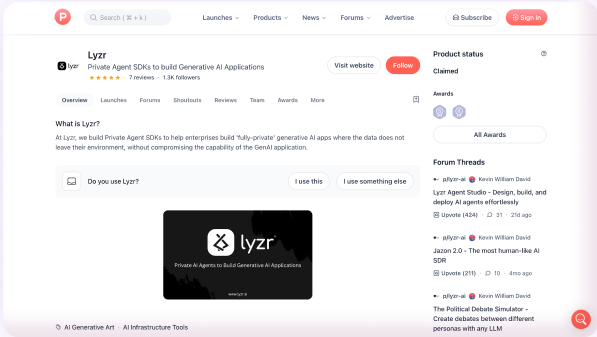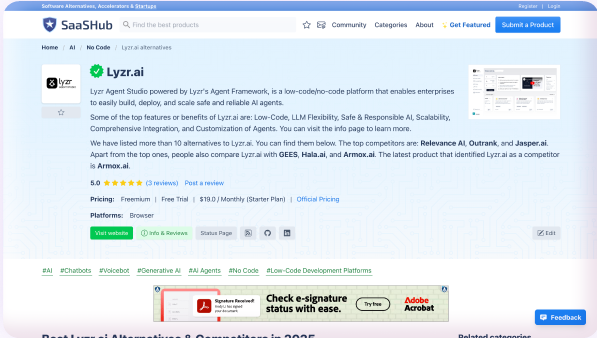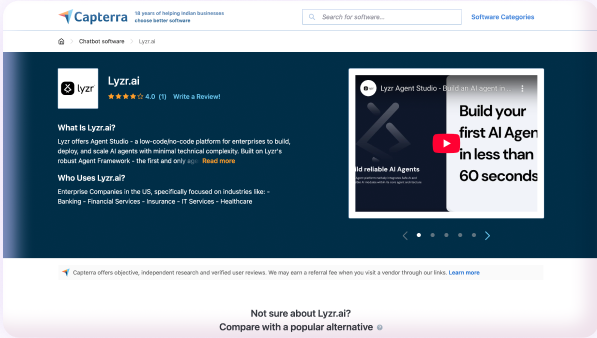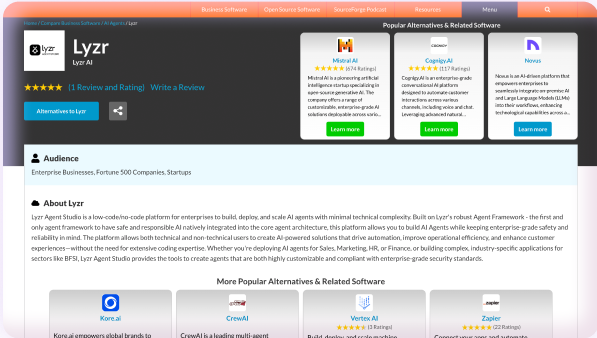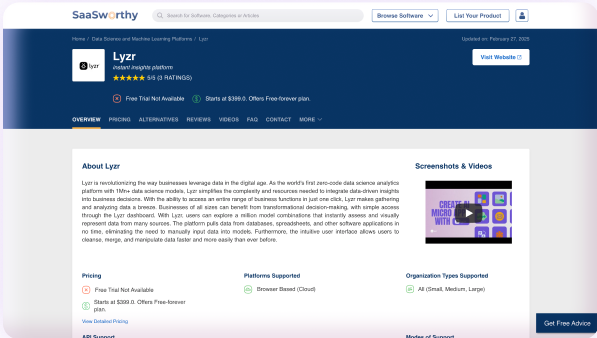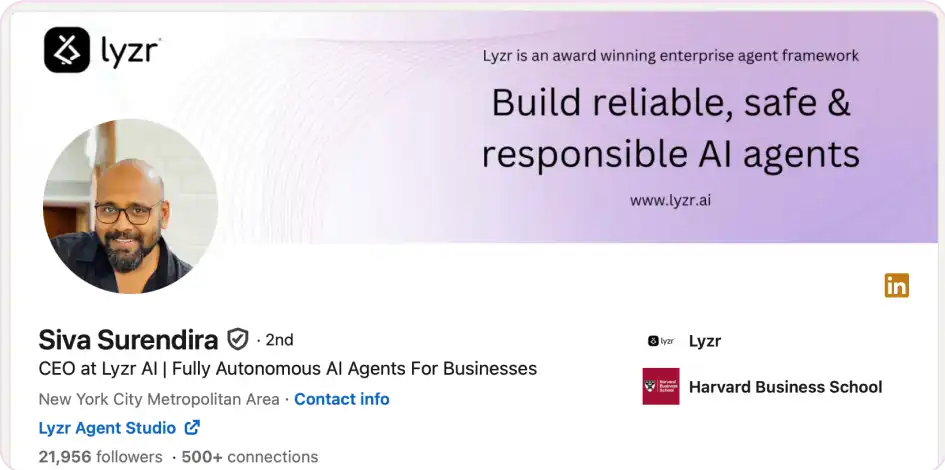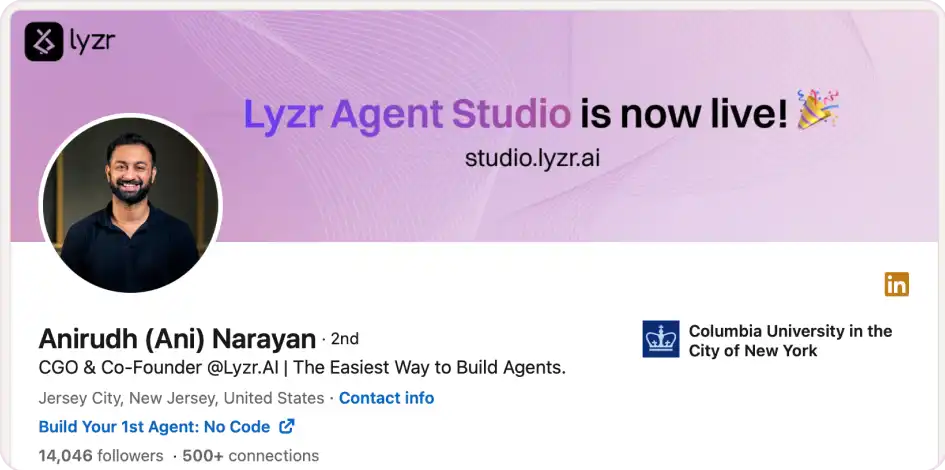Introduction
Marketing for startups and SMBs can feel overwhelming—even with abundant knowledge available, turning theory into actionable steps is the true challenge. This handbook distills practical “do’s and don’ts” from real-world experience—including our success in generating 500 inbound leads per month at LIZEF—into a comprehensive, multi-channel marketing strategy.
2. Defining Your Ideal Customer Profile (ICP)
Before launching any marketing campaign, understand who you’re speaking to. Your ICP informs everything—from website copy to outreach emails.
- Research Your Market: Analyze your current customers, industry trends, and competitors.
- Create Detailed Personas: Define demographics, pain points, goals, and preferred channels.
- Tailor Your Messaging: Develop messaging that directly addresses your ICP’s needs.
- Validate and Iterate: Use surveys, interviews, and analytics to refine your ICP continuously.
3. Crafting Your Core Messaging & Hero Header
The hero header is the first thing visitors see on your homepage. With average bounce rates around 60%, you have roughly 30 seconds to capture your audience.
- First Impressions Matter: Your hero header must instantly communicate your unique value proposition.
- Accurate Positioning: Focus on what your product delivers today—not what you aspire to be—to build immediate trust.
- Foundation for All Channels: The hero header informs website copy, SEO, content strategy, ad creative, influencer messaging, and more.
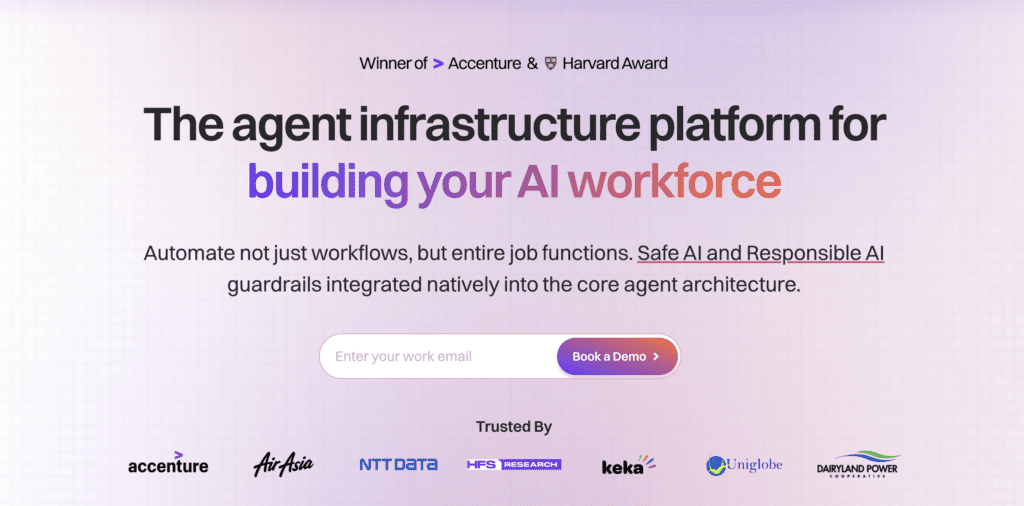
Evolution of Lyzr’s website messaging
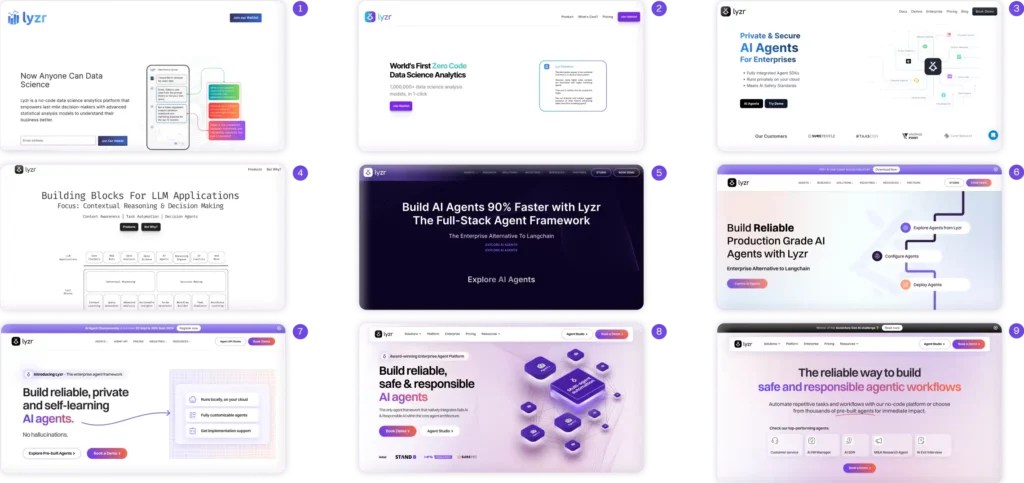
Steps to Perfect Your Hero Header:
- Competitor Research: Analyze both direct and peripheral competitors.
- Evaluate Your Product: Emphasize your product’s current strengths.
- Use Messaging Tools: Leverage tools like a Hero Header Builder or Message Builder (developed by LIZEF) for data-driven ideas.
- Craft, Test, and Iterate: Develop a clear headline, pair it with compelling visuals, and run A/B tests.
- Maintain Consistency: Ensure a unified message across all channels.
4. Building Your Digital Foundation: Website & Web Design
Your website is the cornerstone of your marketing efforts. It must engage visitors instantly, drive conversions, and support your SEO strategy. Here’s what has worked for us:
For Ideation & Design:
- Framer:
- Why: Enables fast ideation and real-time visualization through a modular design approach—ideal for early-stage projects.
- Advanced Platforms (Lovable or Bolt):
- Why: Provide more refined UI elements if you need detailed design aesthetics.
- Design Inspiration:
- Follow experts like Julian Shapiro for homepage and landing page guidelines.
- Consider Analyzer’s Landing Page Builder Agent for data-driven design suggestions.
For Development & Building:
- Webflow:
- Why: Offers a modern UI, intuitive build process, and strong SEO capabilities.
- WordPress:
- Why: Versatile and robust—especially when combined with themes like Cadence WP or builders like Elementor.
- Custom Development (React):
- Why: Allows for unparalleled customization if you have strong React expertise—but only pursue if it doesn’t detract from your core business focus.
5. Content Marketing & SEO: The Twin Engines
Content fuels inbound marketing by boosting SEO, building authority, and driving leads. This chapter covers website copy, blog strategy, customer journey tracking, keyword research, and now ebooks, courses, and community building.
5a. Website Copy & Sitemap Strategy
Website Copy:
- Top Sections Are Critical: The first two to three sections must capture attention and communicate your value proposition with a strong CTA.
- Lower Sections: Use these to build trust by highlighting security, GDPR compliance, and enterprise-readiness when applicable.
Sitemap Strategy:
- Competitor Insights: Analyze the top three or four competitors for ideas on sitemap structure.
- Efficiency: Leverage proven structures and infuse your unique value proposition.
- Consistency: Ensure logical page hierarchy and internal linking to support navigation and SEO.
5b. Blog Content Strategy: TOFU, MOFU, BOFU
Centralize Your Blog Content:
- Host your blog on your website to concentrate traffic, improve SEO, and increase dwell time rather than dispersing content across platforms like Medium.
Content Funnel Breakdown:
- TOFU (Top-of-Funnel):
- Goal: Attract broad interest.
- Example: “Top 5 Agent Platforms for Enterprises”—featuring industry giants alongside your product to build credibility.
- MOFU (Middle-of-Funnel):
- Goal: Engage readers with in-depth insights that address their pain points and introduce your solution.
- BOFU (Bottom-of-Funnel):
- Goal: Capture highly specific search intents.
- Example: A post targeting a long-tail keyword like “Build an Agent with an Inbuilt Prompt Injection Manager That Has 99% Accuracy.”
Planning Tips:
- Develop a content calendar categorizing topics as TOFU, MOFU, or BOFU.
- Include clear CTAs in every post—guiding visitors to book demos or try your product.
5c. Customer Journey & Content Tracking
Mapping the Journey:
Define Clear CTAs: Decide whether visitors should book a demo, try your product, or engage in another key action.
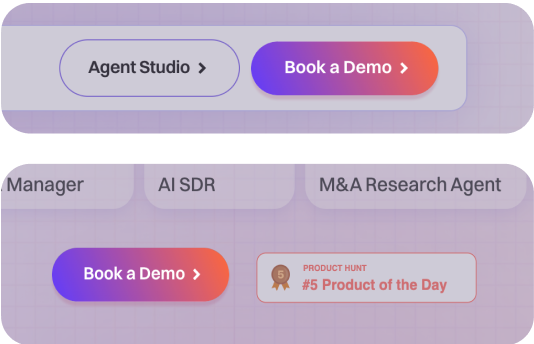
Behavior Tracking: Use tools like Hotjar, Clarity, or Mixpanel to generate heatmaps and monitor user journeys.
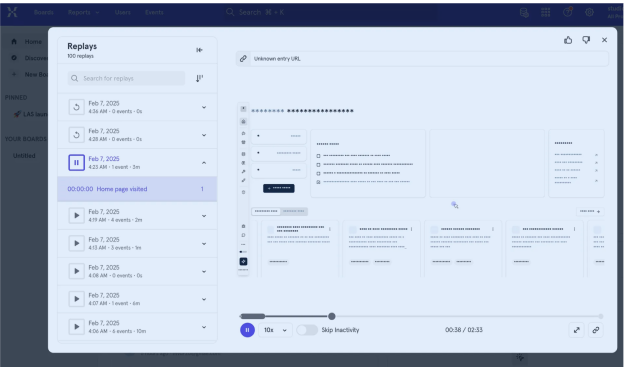
- Visitor Identification: Platforms such as RB2B, KwanZoo, or Factors.ai (with proper cookie consent) help identify visitors so you can target outreach more effectively.
- Optimization: Leverage insights from tracking to continually refine your website and content strategy.
5d. Keyword Research & Strategy
Keywords are the backbone of your content strategy, guiding both your website copy and blog posts.
Key Platforms for Keyword Research:
- SEMrush, ahrefs, and Google Keyword Planner: These tools help reveal which keywords your competitors rank for and can show your own rankings if you’re already established.
- Answerthepublic.com (by Neil Patel): Offers a different perspective by generating long-tail keywords based on common question words (what, where, how, when, etc.), which can help target real user queries.
Guidelines for Keyword Strategy:
- Learn and Iterate: Mastering keywords is a long journey. Invest time in learning or hire a keyword expert for a focused consulting engagement.
- Integrate with Content Generation: Use keyword insights to drive your core content strategy and influence the topics you cover.
- Programmatic Content Production: Leverage marketing agents—such as those developed by LIZEF—that can write blog posts programmatically using models like GPT-01, DeepSeek, or algorithms inspired by Stanford’s TOM algorithm.
- Additional Tools for Programmatic SEO: Explore platforms like Daydream, Simplified, Jasper, Copy.ai, and Surfer SEO.
- Parallel Platform Use: Running two or three keyword/content optimization platforms in parallel can yield a strong ROI—even a $1,000 investment across these tools can be well worth it.
5e. Ebooks, Courses, and Community Building
Ebooks
- Target Your ICP:
- Craft ebooks that resonate with your ideal customer profile. For instance, if your ICP is marketing managers, an ebook titled “Top 20 SEO Strategies” offers valuable insights they crave.
- If your ICP comprises CIOs for a security product, consider an ebook like “Top 10 Security Threats for the Modern CIO.”
- Connect to the Problem You Solve:
- Ensure that the ebook content is closely tied to the core challenge your product or service addresses.
- Focus Your Efforts:
- Start with one well-crafted ebook and take it to market before expanding into multiple projects.
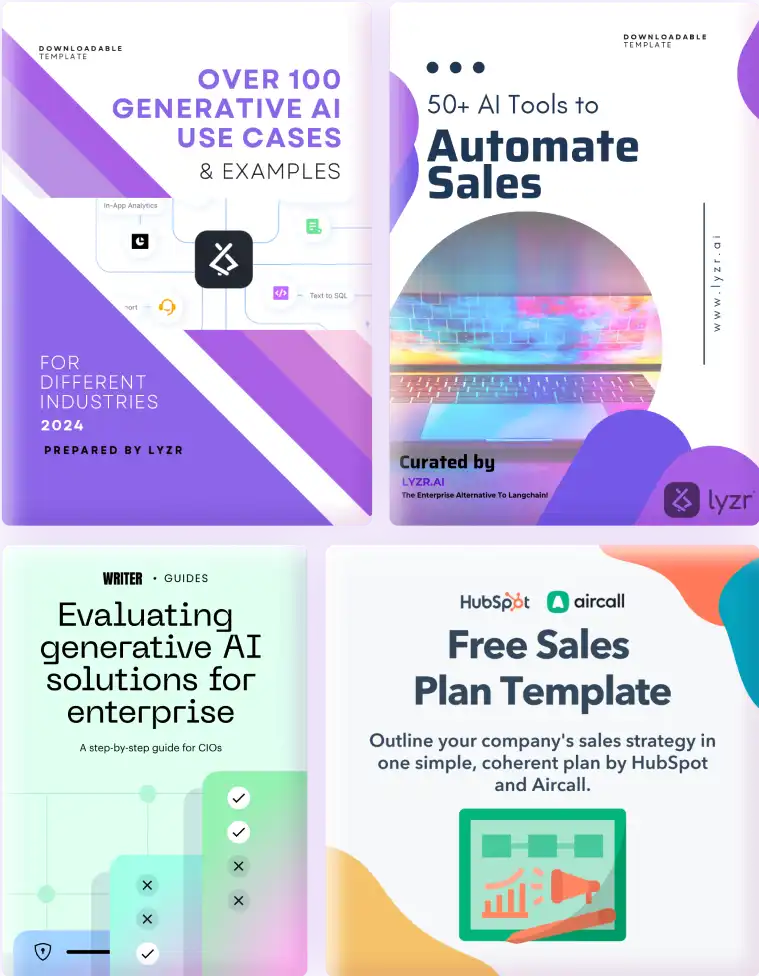
Courses
Two Types of Course Content:
Free YouTube Videos: These are essential for thought leadership and product-related how-to content, even if they’re not full courses.
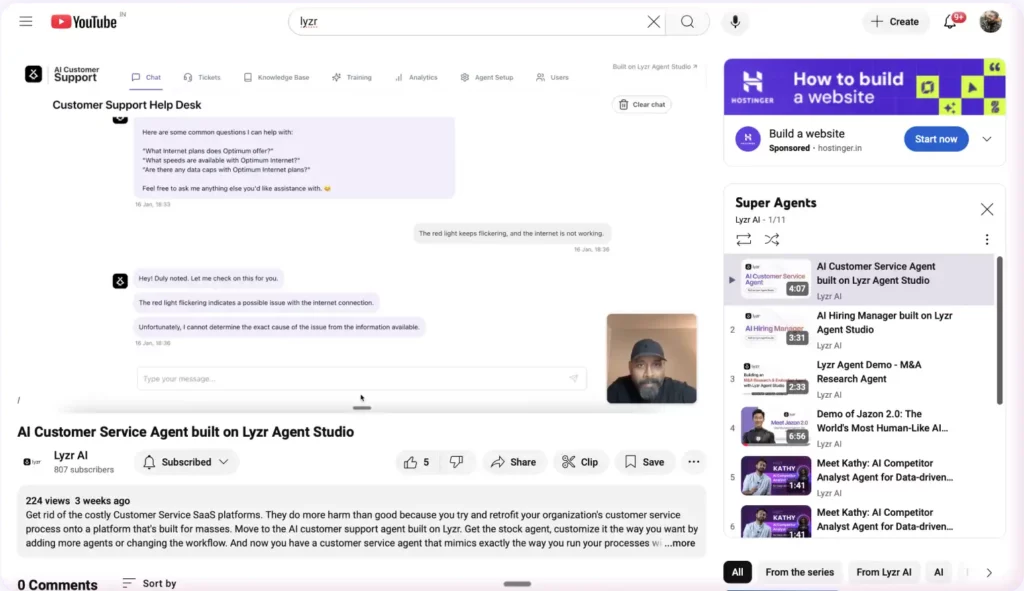
Formal Courses with Certification: Designed as in-depth training programs with certification—allowing participants to earn a badge and validate their expertise.
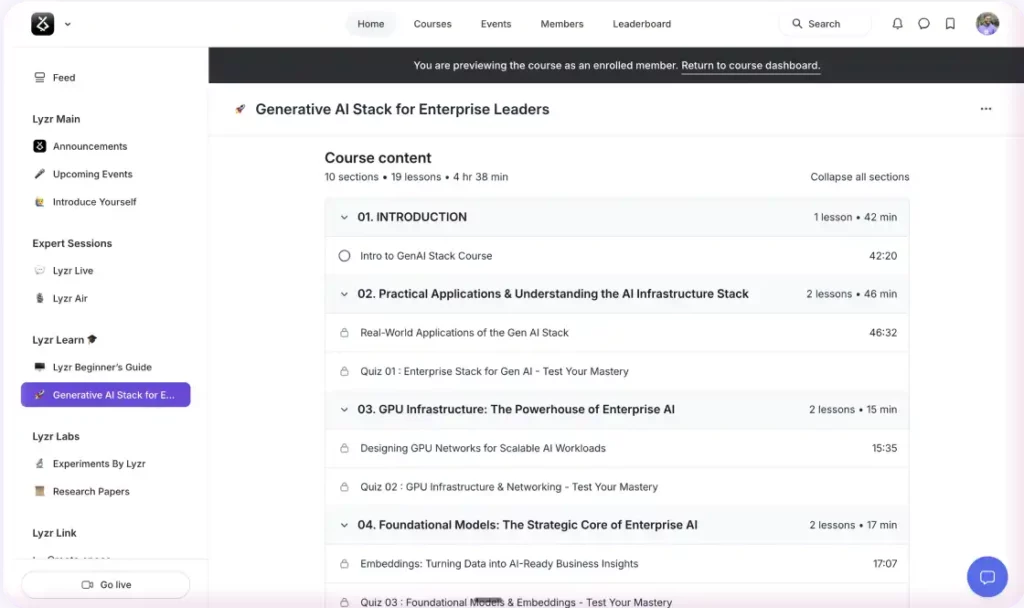
Platform Options:
- Platforms such as Teachable or Maven are popular choices.
- We’ve chosen Circle because it combines course delivery with community building—think of it as a hybrid between Slack and an LMS.
- Alternatively, you can separate the course from community using Slack or Discord.
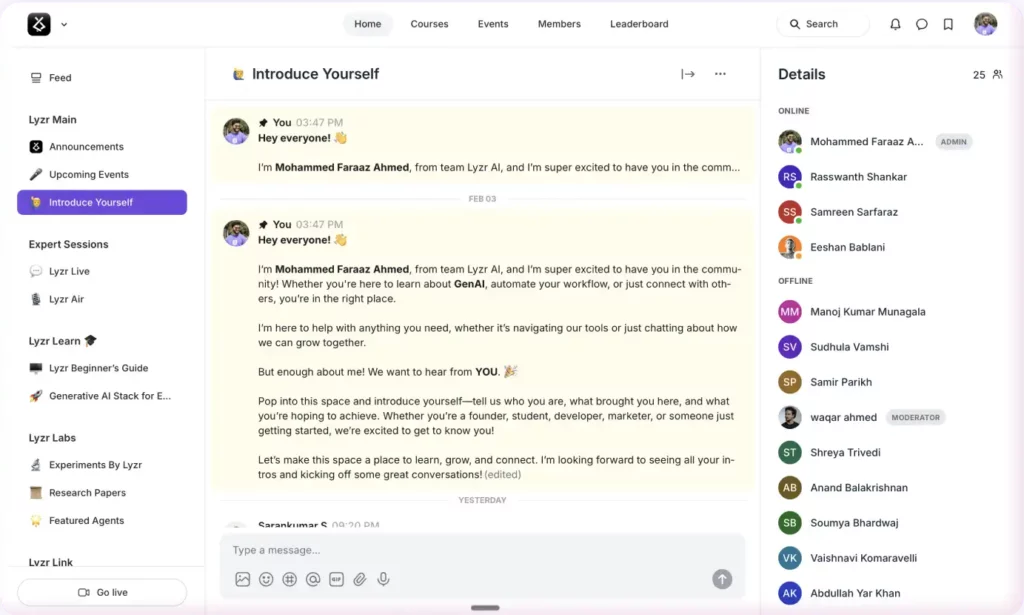
Community Building
Establishing a Community Around Your Content:
- Understand Your ICP:
- Your community platform should match your target audience. For example, don’t force business users onto Discord if that’s not where they naturally gather; likewise, avoid pushing developers onto Slack if that isn’t their preferred medium.
- Choose One Platform Early On:
- For early-stage companies and SMBs, focus on one community platform rather than splitting your efforts across several.
- Platform Examples:
- Circle: Combines course content and community engagement effectively (inspired by insights from Jason Calacanis, Kelly Fisher, and the Founder University team).
- Discord or Slack: Suitable for specific audiences, though the choice should be driven by where your ICP already congregates.
- Develop a Clear Community Strategy:
- Plan carefully how you’ll build and nurture your community. It’s better to get it right the first time than to experiment repeatedly.
- In some cases—especially if your content goes viral—the market might determine the best platform (for example, Reddit). Otherwise, deliberate planning is key.
6. Multimedia Assets: Videos, E-Books, and Podcasting
Diversify your content mix to boost engagement and capture leads across multiple formats.
Videos
Scaling Your Video Marketing with AI Automation
Video content is a crucial part of modern marketing, but scaling high-quality production can be resource-intensive. With AI-powered tools like Lyzr Agent Studio, 11Labs, and HeyGen, you can automate scriptwriting, voiceovers, and video creation-ensuring efficiency, consistency, and engagement at scale
AI-Powered Video Creation Workflow
1. Generate Scripts with Lyzr Agent Studio
Lyzr Agent Studio enables seamless script creation with a consistent tone and style, tailored to various marketing needs like explainer videos, product demos, and brand storytelling.
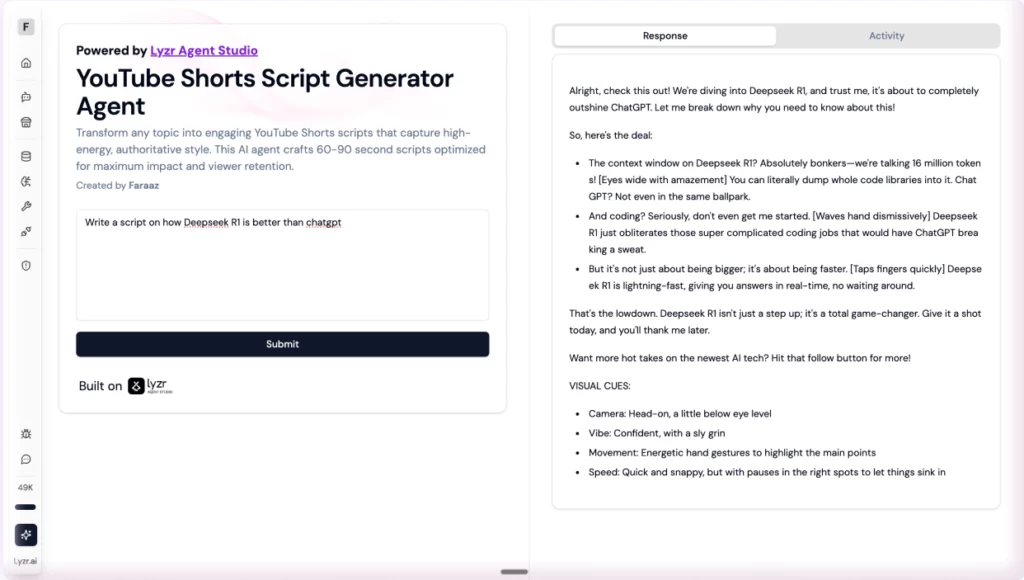
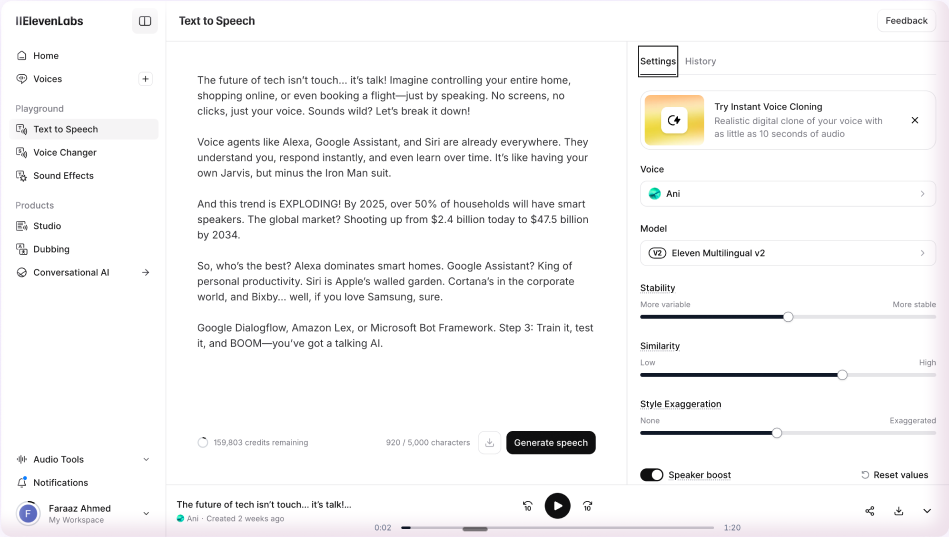
2. Convert Scripts into Natural Voiceovers with ElevenLabs
Upload the script to ElvenLabs for AI-generated voiceovers with human-like speech. You can also clone your voice for authenticity, making your content more personalized and brand-consistent.
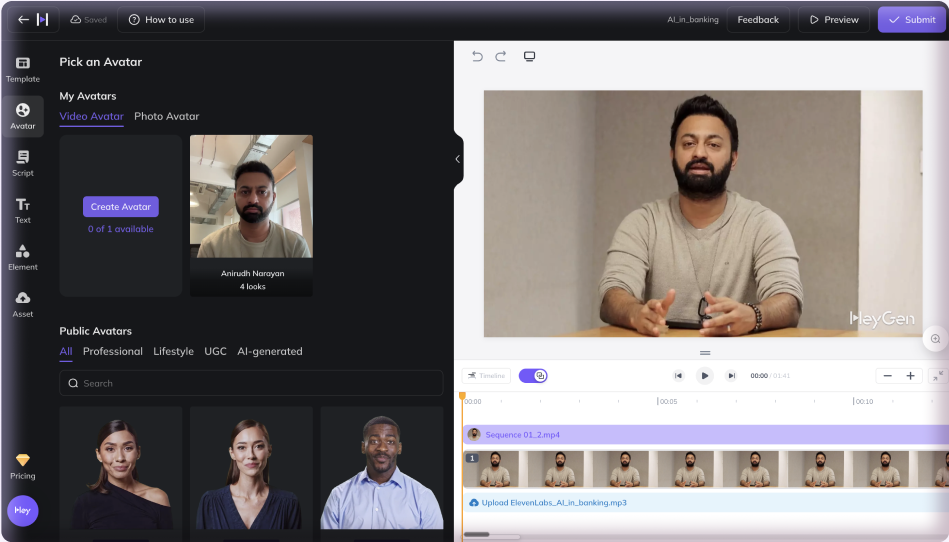
3. Create AI-Generated Videos with HeyGen
HeyGen syncs voiceovers with visuals, allowing for automated video production using AI avatars. With AI-powered face and video cloning, it ensures uniformity across multiple video assets.
AI-Powered Video Use Cases
Explainer Videos
Use HeyGen’s AI avatars to deliver crisp, engaging explanations in multiple languages, paired with Eleven Labs for natural voice narration. (Click here to see an AI Avatar video in action.)
Customer Testimonials
Transform written testimonials into engaging video stories with AI-generated avatars and voice cloning for an authentic feel.
Product Demos
Showcase features using AI-powered video guides, ensuring clarity and accessibility without the need for live recording.
Behind-the-Scenes Footage
Narrate your BTS content with AI avatars, keeping your brand’s storytelling engaging and professional.
E-Books:
Use them as lead magnets that provide in-depth insights.
Podcasting:
Host your own podcast or participate as a guest on industry podcasts to extend your reach while ensuring consistency and high quality.
7. Email Marketing and Outreach Strategies
Email marketing is one of the most cost-effective channels available—delivering outstanding ROI when executed correctly. However, success in this channel depends on how you use it, and on leveraging automation intelligently.
A. The Value of Email Marketing
- Cost Efficiency & ROI:
- Email is by far one of the cheapest marketing channels. When done right, it offers a tremendous return on investment.
- Think of email as a way to consistently get in front of your audience—not solely as a tool to convert meetings, but to build brand awareness and maintain top-of-mind presence.
- Massive Touch Points:
- Consider that even if you reach out to a list of 20,000 contacts once a week (roughly 50 times a year), that creates 20,000 × 50 ≈ millions of touch points.
- Even accounting for a small percentage of unsubscribes, you’re still engaging with a vast number of interactions over the course of a year.
B. Leveraging AI SDRs for Email Outreach
- Purpose-Driven Automation:
- AI SDR agents are a powerful tool when used correctly. They aren’t just about “another channel” to send emails—they help automate the process of maintaining regular, high-frequency touch points with your audience.
- The key is to use AI SDRs to consistently nurture relationships rather than to chase immediate meeting conversions.
- How to Use Them Effectively:
- Think of automation as a way to stay on your audience’s radar. For example, if you send out emails 50 times a year to a 20,000-strong list, you’re creating an environment where your message is repeatedly seen.
- Start with free or trial versions of AI SDR solutions (for example, the LIZER AI SDR agents available on the app store) to test how best to integrate them into your outreach strategy.
AI SDR Workflow Diagram

C. Best Practices for Email Newsletters
- Build a True Subscriber List:
- For email newsletters, only send messages to users who have actively subscribed. Avoid purchasing lists—this protects your brand reputation and ensures that you’re communicating with an audience that has genuine interest.
- Choose the Right Platform:
- Platforms like Bhai (one of the upcoming recommended platforms), LiveKit, and a few others offer robust features to help you manage and distribute newsletters.
- Focus on nurturing your list with high-quality content that keeps your audience informed and engaged. Newsletters are a fantastic way to share updates, insights, and stories that reinforce your brand identity.
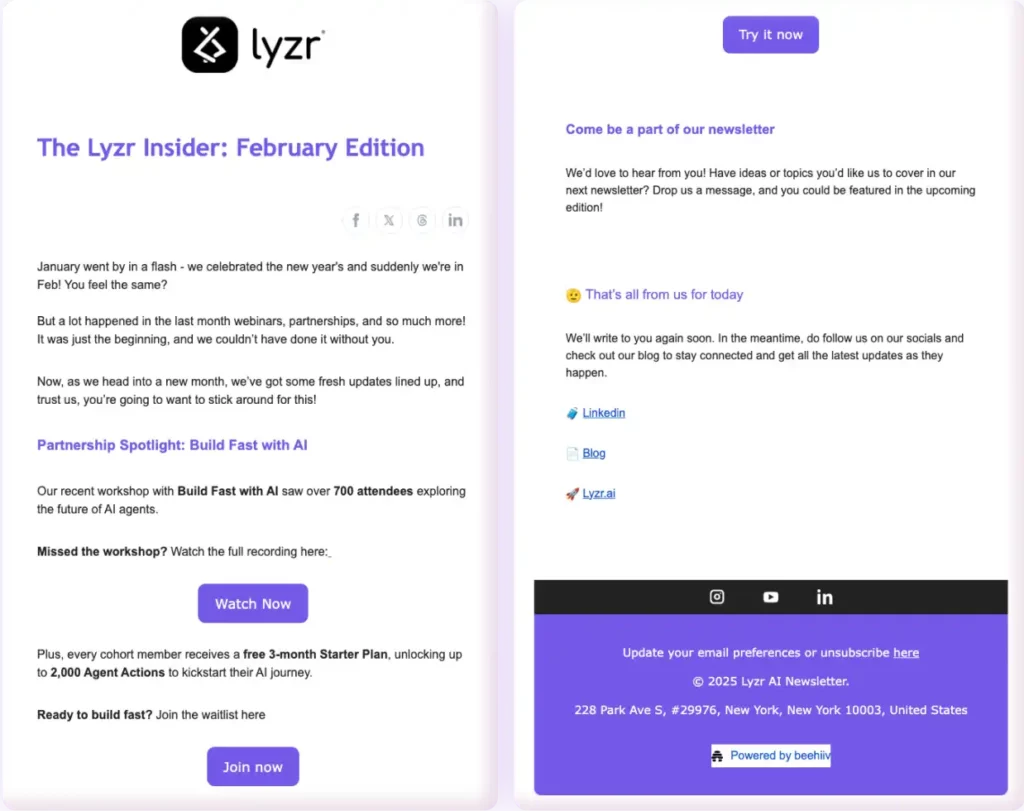
D. Overall Approach to Email Outreach
- Frequency Over Immediate Conversions:
- Rather than measuring success solely by the number of meetings booked, consider the broader impact of repeated exposure. Millions of email touch points can cumulatively drive awareness, trust, and eventual conversion.
- Integration with Overall Marketing:
- Ensure that your email marketing efforts tie into your overall strategy. For example, when combined with strong content and SEO efforts, your emails reinforce the credibility of your brand.
- Continuous Testing and Refinement:
- Leverage analytics to track open rates, click-through rates, and engagement levels. Use these insights to optimize subject lines, content, and send frequency.
By thinking of email marketing as a long-term engagement strategy—and by smartly automating outreach with AI SDRs—you can maximize ROI and build lasting relationships with your audience without needing an enormous budget.
8. Performance Advertising & Social Media Marketing
Paid channels can accelerate your marketing when integrated with organic efforts. Experimentation is key—if you have a large ad budget, try multiple platforms. If funds are limited, focus on what drives the best results.
8a. Ads, Influencers, and Affiliate Strategies
Paid Advertising:
- Budget Considerations:
- If you’re a highly funded company with substantial ad budgets, experiment broadly across platforms (Google, Facebook, Instagram, TikTok, Reddit, Quora, etc.).
- For those with limited budgets, focus on platforms that deliver the best returns. For example, our experience at LIZEF shows that a monthly ad spend of around $3,000 on Google Ads can yield close to 500 leads.
- Platform Effectiveness:
- We’ve found that Twitter and LinkedIn are less effective for our purposes, so if funds are tight, concentrate on Google Ads.
- Note that Google Ads work best when paired with a strong SEO presence—ads that appear alongside your organic content add credibility.
- Testing & Budget Rotation:
- Consider testing different platforms on a quarterly basis. For instance, run campaigns on Google one quarter and on Facebook the next to see where your audience engages most effectively.
- Professional Help:
- Designing and managing Google Ads is as much a science as it is an art. Engaging professional help or agencies can save money and optimize results.
Influencer Strategy:
- Micro-Influencers First:
- In the early stages, focus on micro-influencers who can offer authentic engagement and initial traction in the video and social space.
- Scaling Up:
- As your product matures and budgets increase, consider targeting superstar influencers such as Ali Miller or Zain Khan.
- Keep in mind that top influencers typically endorse products they believe in, so a fantastic product can earn organic endorsements rather than just paid posts.
- Budget Allocation:
- Early on, allocate your influencer budget toward micro-influencers to maximize ROI. Over time, build relationships that may lead to free or mutually beneficial collaborations.
Affiliate Programs:
- Exploring Affiliate Strategies:
- Look into successful affiliate programs—such as those from HubSpot or HighLevel—for inspiration and to determine if an affiliate model makes sense for your business.

Case Example:
- chatbase.co:
- A chatbot company that grew rapidly by being a significant spender on Google Ads. Their experience highlights that well-designed ads, continuous testing, and professional management are critical to success.
9. Specialized Motions: Influencers, Affiliates, Developers, and Partners
Tailor your marketing approach based on your product and audience.
- Influencer Programs:
- Collaborate with influencers (for product companies) or thought leaders (for service companies) to extend your reach.
- Affiliate Programs:
- Use performance-based incentives to drive user acquisition.
- Developer Relations:
- Build communities by offering resources, hosting hackathons, and engaging on relevant forums.
- Partner Motions:
- Develop co-marketing initiatives (webinars, joint content) with complementary businesses.
10. Public Relations: Press Releases & Media Relationships
Press releases serve as a traditional, necessary tool for sharing company news, product launches, and milestones. However, keep in mind the following points:
- Press Releases as a Tactical Necessity:
- Most companies use standard tools (such as PR Newswire) to publish press releases. They are primarily a “job to be done”—a way to get your news out and secure valuable backlinks—rather than a strategic lever for explosive growth.
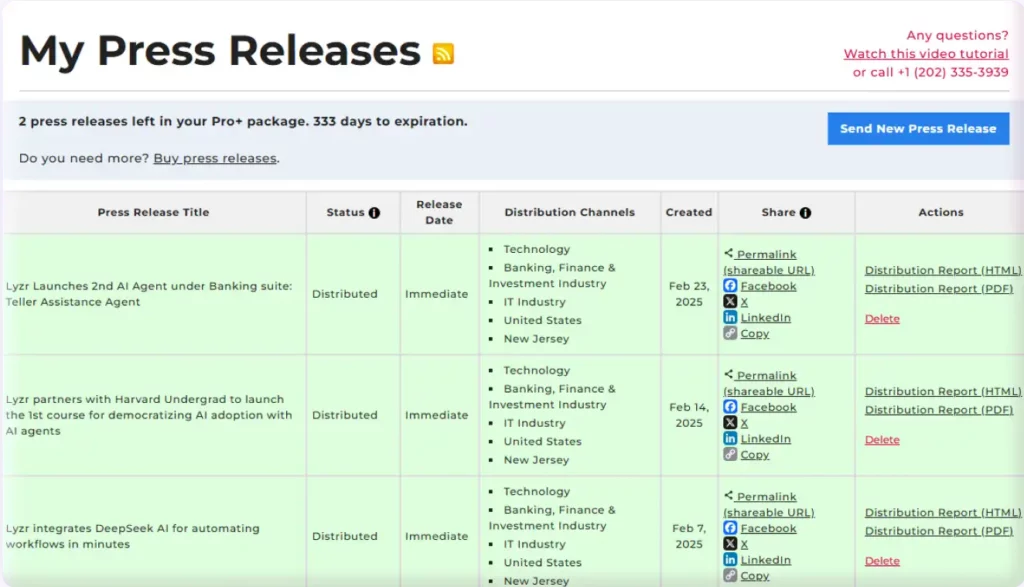
- Limited Strategic Advantage:
- Unless you have truly viral-worthy news, press releases by themselves rarely provide a significant competitive advantage. They are best viewed as one component of a broader PR and SEO strategy.
- Backlink Benefits:
- Even if a press release doesn’t generate immediate buzz, it contributes to your overall SEO efforts by creating backlinks and improving your online presence.
- Consider Alternative Platforms for Virality:
- If your goal is to generate viral buzz, platforms like Twitter can be more effective. Twitter’s algorithm is designed to amplify viral content far more than press releases typically do.
- Do It and Move On:
- Ultimately, press releases are one of many mediums you should use. They are important to complete your media outreach strategy—even if they’re not your primary channel for driving virality.
By balancing press releases with other dynamic platforms (such as Twitter for viral moments), you can ensure that you cover all bases—building both long-term SEO value and the potential for short-term buzz when your news is truly compelling.
11. Listing in Marketplaces and Review Sites
In today’s digital marketplace, having your product listed on reputable review sites and marketplaces is critical for both inbound lead generation and building trust. This strategy is particularly vital for technology and software companies, as potential customers increasingly rely on third-party reviews and listings during their research and decision-making processes.
Why Listings Matter
- Enhanced Visibility:
- Platforms such as G2 Crowd, Capterra, and SourceForge are trusted by buyers as starting points for product research. A strong presence here increases your product’s visibility among qualified prospects.
- Social Proof and Credibility:
- Positive user reviews on these sites serve as powerful social proof. They help validate your product’s quality and performance—often influencing prospects who are comparing multiple options.
- Inbound Lead Generation:
- Many buyers use these platforms to narrow down their choices. An active listing, complete with high ratings and detailed reviews, can drive a steady stream of inbound leads.
- SEO Benefits:
- Listings often provide valuable backlinks to your website. These not only boost your search engine rankings but also help build authority in your niche.
Where to Find Lyzr: Our Marketplace Presence
Best Practices for Listings
- Encourage Customer Reviews:
- Actively ask satisfied customers to leave reviews. A steady stream of positive feedback reinforces credibility and drives more organic interest.
- Keep Your Listings Up-to-Date:
- Regularly update your product information, add new case studies, and highlight recent awards or accolades. This ongoing maintenance signals that your product is actively supported and continuously improving.
- Tailor Your Strategy to Your Product Type:
- For enterprise software, consider also listing on industry-specific platforms such as Gartner, Forrester, or HFS Research. These venues are highly regarded in the enterprise space and can greatly influence purchasing decisions.
- Monitor and Respond:
- Engage with reviewers by responding to both positive feedback and constructive criticism. This shows that you value customer input and are committed to continuous improvement.
Strategic Considerations
- Integrated Approach:
- Listing in marketplaces and review sites should be part of a broader marketing strategy. Combined with strong content, SEO, and email outreach, these listings form a critical component of your overall lead generation engine.
- Measure Impact:
- Track the traffic, lead conversions, and engagement coming from each listing platform. Use these insights to refine your approach and prioritize the sites that offer the best ROI.
By ensuring your product is well-represented on key review sites and marketplaces, you create an additional, highly credible channel for attracting new customers while reinforcing your brand’s authority and trustworthiness in the market.
12. Events and Experiential Marketing
Events can be high-impact if executed with a clear ROI focus.
- Choose the Right Events:
- Select events where your ICP is present.
- Budget Allocation (1+1 Formula):
- Invest in a booth for basic visibility and match that with supporting activities (customer dinners, interactive sessions) to amplify impact.
- Follow-Up:
- Capture leads and implement a robust post-event outreach strategy.
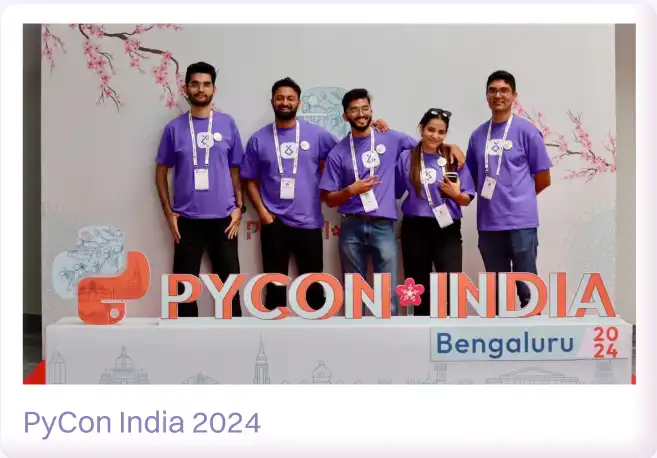
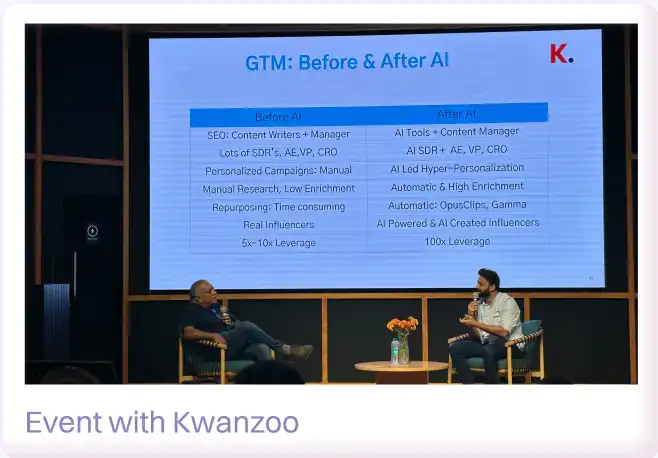
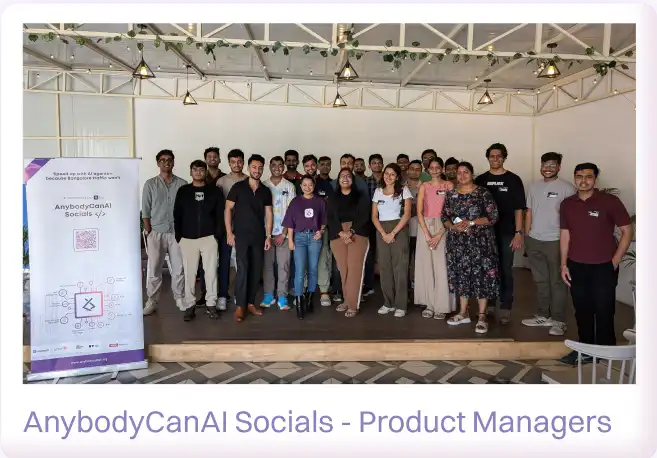

13. Integrating Your Marketing Channels
Ensure all channels work together seamlessly for maximum impact.
- Unified Messaging:
- Maintain consistency across your website, social media, email, and offline channels.
- Cross-Promotion:
- Repurpose content across platforms (e.g., blog posts in newsletters).
- Analytics & KPIs:
- Set measurable goals for each channel and monitor performance with integrated analytics.
- Continuous Iteration:
- Regularly review data and refine your strategy accordingly.
14. Case Studies and Best Practices
Lyzr’s Success Story:
- Challenge: Consistently generating 500 inbound leads per month.
- Strategy: A multi-channel approach—including a conversion-optimized website with a compelling hero header, robust content and SEO strategies, targeted email campaigns, engaging social media, and strategic PR initiatives.
- Results: Enhanced lead quality and measurable ROI.
Additional Case Studies:
- Startup Spotlight: A product company leveraging influencer and affiliate programs for rapid user acquisition.
- SMB Example: A service-based business building authority through thought leadership, developer relations, and event marketing.
15. Virality: Engineering and Leveraging Viral Growth
Virality is often considered the holy grail for startups—a phenomenon that can deliver massive growth at almost no cost. However, as many founders know, achieving virality is rare (perhaps one in a million companies). While you might not be able to “engineer” virality with a formula, there are strategic approaches you can adopt to increase your chances:
Why Virality Matters
- Cost Efficiency: Viral growth can dramatically lower your customer acquisition costs.
- Brand Visibility: A viral product or campaign can rapidly boost awareness and credibility.
- Momentum: Once a product starts to gain traction, word of mouth can fuel exponential growth.
Key Ingredients for Virality
- Consistent Launches and Experimentation:
- Virality rarely happens on the first try. Consistency is key—plan to launch repeatedly on platforms like Product Hunt, Hacker News, and even targeted social channels.
- Example: Lovable, a GPT engineering tool, launched multiple times over a year. After several attempts—and by engaging TikTok influencers well in advance—they finally experienced a viral launch when the buzz aligned with their Product Hunt debut.
- Building Hype Before the Launch:
- Pre-launch activities are essential. Engage with influencers (especially on platforms like TikTok), nurture your audience, and build anticipation.
- Example: WordWare, a fun free Twitter analysis tool, built momentum over several months. By the time they launched, their product quickly amassed around 20,000 users, nearly breaking viral records on Product Hunt.
- Product and Experience Design:
- Virality is not just about marketing; it starts with a product designed to be shared. Ensure that your product or the experience you offer is engaging, fun, and delivers clear value.
- Ask: What is the “shareable” element of your product? Whether it’s an innovative feature or a fun use case, design your product with the potential to spark conversation.
- Building Your Own Audience:
- Relying on external agencies (or “Product Hunt sweatshops”) to generate votes or buzz is not a sustainable strategy. Instead, focus on building a loyal audience that will support your launch organically.
- Promote your launch across your existing channels, and nurture relationships with early adopters who are likely to share their experiences.
- Purposeful and Authentic Engagement:
- Authenticity is key. Rather than spending excessive funds on gimmicks, invest time and effort into perfecting your product, its design, and its messaging.
- Remember, top influencers are more likely to endorse a product they genuinely believe in. As your product matures, these influencers may reach out to you rather than demanding payment for a post.
Practical Tips to Increase Your Viral Potential
- Plan Multiple Launches:
- Treat each launch as an experiment. If one launch doesn’t go viral, analyze what worked and what didn’t, then refine your approach for the next launch.
- Engage Across Platforms:
- Diversify your launch efforts. Test out different channels (Product Hunt, Hacker News, social media platforms) sequentially or in rotation rather than splitting a limited budget across too many simultaneously.
- Leverage Influencers Strategically:
- Start with micro-influencers to build initial traction. As you gain credibility and user feedback, gradually target larger influencers who will only support products they see as truly outstanding.
- Avoid Over-Reliance on Paid “Boosts”:
- While paid strategies can help, they cannot replace a great product and genuine engagement. Focus on product excellence and authentic community building.
Final Thoughts on Virality
While virality cannot be guaranteed, maintaining a consistent commitment to high-quality product launches, thoughtful pre-launch buzz, and authentic engagement can significantly improve your odds. Focus on creating experiences that resonate with your target audience, and remember that even if virality remains elusive, the process of preparing for it will strengthen your overall marketing and product strategy.
16. Founder-Led Marketing
Founder-led marketing is a uniquely powerful strategy for both early-stage startups and SMBs. When a founder takes the lead in sharing insights, vision, and use cases, it not only builds authenticity but also creates a personal connection with the audience. Many successful companies have leveraged founder-led marketing to achieve remarkable results without relying heavily on paid channels.


Why Founder-Led Marketing Matters
- Authenticity and Trust:
- Customers often resonate more with a genuine story told directly by the founder. It humanizes the brand and builds trust.
- Cost-Effective Reach:
- Founder-led marketing can be executed with minimal cash investment yet yield high returns. By leveraging personal channels—like LinkedIn, Twitter, or a personal blog—a founder can reach and influence a vast audience.
- Direct Customer Engagement:
- When founders share use cases, thought leadership, and real-life examples, it not only educates potential customers but also creates inbound interest. At LYZR, several top enterprise customers reached out after engaging with the founder’s insightful LinkedIn posts.
Notable Examples
- Adam Robinson of Retention.com:
- Adam is a standout example of founder-led marketing. He spends dedicated time—often 4 hours every Friday—shooting and reshooting videos, gathering data, and refining his message. His well-researched LinkedIn posts provide actionable insights rather than mere product promotion.
- Indie Developers on Twitter:
- Many indie developers have built a following by sharing technical insights and product updates directly from their personal accounts. Their authenticity and willingness to share learnings have driven significant organic growth.
- Elon Musk and Tesla:
- Perhaps the most high-profile example, Elon Musk uses his personal brand to drive attention and credibility for Tesla. His public statements and social media presence have a direct impact on the company’s perception and market buzz.
How to Execute Founder-Led Marketing
- Commit to Consistency:
- Dedicate regular time in your schedule (e.g., a few hours each week) to create high-quality content. Consistency builds momentum and reinforces your presence.
- Share Valuable Insights:
- Focus on sharing lessons learned, industry insights, and real use cases that benefit your audience. This positions you as a thought leader rather than just a salesperson.
- Utilize Multiple Platforms:
- While LinkedIn is an excellent channel for professional audiences, consider using Twitter, personal blogs, or even YouTube to diversify your reach.
- Engage Authentically:
- Respond to comments, engage in discussions, and listen to feedback. The more genuine your interactions, the stronger your personal brand becomes.
- Leverage Existing Content:
- Repurpose content from your speaking engagements, interviews, or webinars. This not only maximizes your efforts but also creates a cohesive narrative across platforms.
- Measure and Iterate:
- Use analytics to track engagement, reach, and conversion. Adapt your strategy based on what resonates most with your audience.
By adopting a founder-led marketing approach, you build an organic, highly credible channel of communication that can drive significant inbound leads and establish your brand as a leader in your industry.
17. Partnerships: Building a Network Through Co-Marketing & Co-Creation
Partnerships are a key strategic lever, especially for early-stage startups and SMBs. Think of them as a modern barter system—where you trade value with complementary businesses to create a win-win situation. By forging strong partnerships, you can tap into established networks, share resources, and co-market to a broader audience.
Why Partnerships Matter
- Cost-Effective Growth:
- Partnerships allow you to access new customer bases without the need for large cash outlays. They work on the principle of exchanging services or exposure, much like a barter system.
- Enhanced Credibility:
- Being associated with trusted partners (or even being part of a well-known ecosystem) builds credibility. For example, many Y Combinator companies find that a large portion of their initial customers come from within the YC network.
- Co-Marketing & Co-Creation:
- Partnerships enable you to co-market your product alongside your partner’s offering, thereby expanding your reach. They also open opportunities for co-creation—developing new features or even joint products that appeal to both audiences.
- Network Effects:
- A strong network can amplify your marketing efforts. When multiple companies within a network promote one another, the collective reach is far greater than what any single company could achieve alone.
Real-World Examples
- Y Combinator Model:
- A significant percentage of early customers for YC startups come from other YC companies. This network effect is driven by the shared ecosystem, where companies naturally prefer to work with or learn from each other.
- Co-Marketing in Action:
- Think of partnerships as a way to extend your sales and marketing funnel. When you align with another company whose audience overlaps with yours, both parties benefit from increased exposure and credibility.
How to Build Effective Partnerships
- Identify Complementary Partners:
- Look for companies that serve a similar or complementary target audience. The goal is to create a mutual benefit, so choose partners whose strengths enhance your own value proposition.
- Develop a Clear Value Proposition:
- Clearly articulate what you bring to the table. Whether it’s access to a niche market, a unique technology, or valuable content, ensure that the partnership is balanced.
- Co-Create and Co-Market:
- Develop joint initiatives such as webinars, blog series, or even integrated product features. Co-marketing campaigns not only share costs but also merge audiences, increasing the potential for leads.
- Leverage Existing Networks:
- Consider joining or creating networks where companies can support one another. Being part of an ecosystem (like the YC network) can lead to natural, organic partnerships.
- Measure and Iterate:
- As with all marketing strategies, track the performance of your partnerships. Monitor metrics such as lead generation, conversion rates, and overall brand awareness to assess their effectiveness and refine your approach.
Final Thoughts on Partnerships
Partnerships are more than just a means to share marketing costs—they are about building a connected community where businesses help each other grow. By leveraging a barter-like system of value exchange, you can access broader markets, create strong co-marketing campaigns, and ultimately drive sustainable growth without a heavy cash investment.
18. Conclusion & Next Steps
Final Thoughts:
- From Theory to Action: This handbook is designed to move you from planning to execution. Start with a few core tactics, measure the results, and scale accordingly.
- Iterative Learning: Marketing is dynamic—continually refine your strategy based on new insights and trends.
Next Steps:
- Audit Your Current Marketing: Identify existing assets and channels, then pinpoint areas for improvement.
- Set Clear Objectives: Define measurable goals (e.g., inbound lead targets, conversion rates).
- Develop an Action Plan: Create a timeline and assign responsibilities based on the strategies outlined here.
- Measure and Iterate: Regularly review performance data and adjust tactics as needed.
Additional Resources:
- Recommended readings and tools for SEO, content calendars, email marketing, and social media management.
- Access to tools such as the Hero Header Builder and Analyzer’s Landing Page Builder Agent to streamline your design and messaging processes.

